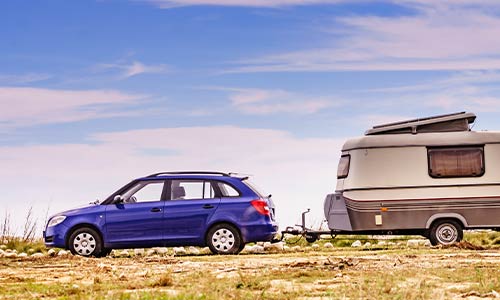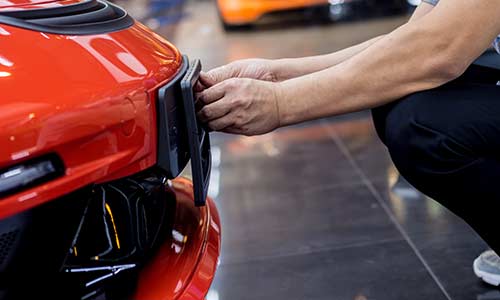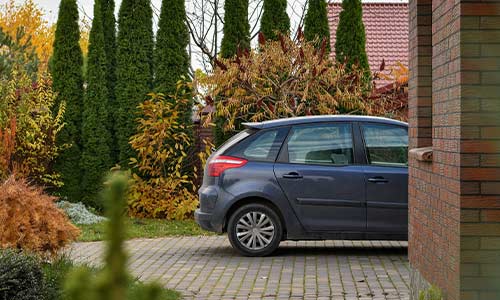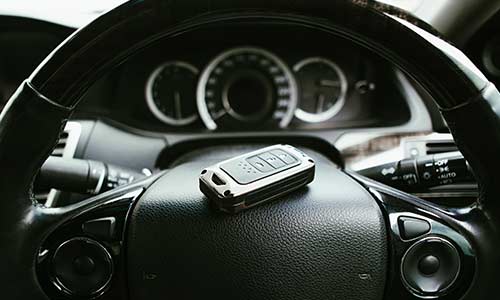Mandatory speed limiters in the UK explained
On 6th July 2022, speed limiters became a legal requirement for all new cars manufactured in Europe.
From 7th July 2024 onwards, all car manufacturers will be legally required to ensure any cars on sale in their showrooms have speed limiters fitted. This means that any showroom cars without speed limiters will need to have the technology retrofitted.
Speed limiters (which utilise smart speed-limiting technology called ‘intelligent speed assistance’ [ISA]) are becoming increasingly common on UK roads. In this guide, we will explain what speed limiters are, how they work – and what the new regulations will mean for drivers.
Get a free valuation
Do the speed limiter laws affect the UK?
Although the speed limiter legislation introduced in July 2022 was passed by the EU, it was also ratified into UK law, which means it still applies here, even though the UK is no longer part of the EU.
According to the legislation, all new cars sold in Europe (including the UK) must be fitted with speed-limiting technology.
Manufacturers also have until July 2024 to retrofit speed limiters to the existing models in their showrooms.
Please note: Although the legislation states that speed limiters must be fitted to new cars, it does not necessarily require them to be activated. Furthermore, as we will explain later in the article, the definition of ‘speed limiter’ is flexible – and not all devices will physically slow down a vehicle when the driver reaches the legal speed limit.
What is the ISA system?
The intelligent speed assistance (ISA) system is designed to ensure that vehicles cannot exceed mandatory speed limits.
Why are speed limiters being made mandatory?
UK Government figures show that 50% of cars speed in 30mph zones – and a third of all road fatalities are caused by excessive speed. Speed limiters are being introduced to reduce the number of road collisions.
How do speed limiters work?
Some speed limiters utilise an ISA system, which employs cameras to detect traffic signs. Others use Global Positioning System (GPS) technology, which combines information on the driver’s location and the local speed limit.
(Some speed limiters may use a combination of the above methods.)
How do speed limiters stop cars from driving above the speed limit?
There are three main types of speed limiters. Here is quick explainer on how they each work:
- An informative or advisory ISA prevents speeding by showing a warning symbol or alert if you exceed the speed limit, whilst also reminding you of the legal limit.
- A supportive or warning ISA increases upward pressure on the accelerator pedal, making it harder to push down on the pedal if you exceed the speed limit.
- Finally, an intervening (or mandatory) ISA reduces the engine power if you are speeding, ensuring a gradual speed reduction (with no braking required). This type of speed limiter works similarly to a cruise control system by ensuring the vehicle does not exceed a certain speed (in this case, the legal speed limit).

Speed limit warning light symbol
Can you deactivate the speed limiter?
Yes, it is possible to deactivate a speed limiter. However, the technology will be reactivated whenever the car is restarted.
How do you deactivate the speed limiter?
All types of speed limiters can be overridden by pressing down forcefully on the accelerator. It is important to be aware that exceeding the speed limit is illegal under any circumstances and you may incur penalties by doing so.
However, it may be appropriate to override a speed limiter if the device misread the local speed limit (e.g. if it interpreted the limit to be 50mph and you know that it is 60mph).
What are data loggers?
Data loggers monitor your journey, so that if an accident occurs, your insurer can retrieve data telling them how you were driving when the incident occurred. This information may also be used for prosecution.
How do data loggers work?
Data loggers use a combination of GPS technology and in-car sensors. By utilising this technology, they can provide data on your speed, car position and whether you were braking or cornering hard.
Issues with speed limiters
Speed limiters can sometimes be unreliable for various reasons. For example, a speed limiter may misinterpret a sign displayed on the back of an EU lorry as a road sign or, it may misread a speed limit sign due to the view being obscured.
Furthermore, not all speed limiters are placed in the direct eye line of drivers, which can cause a distraction. For example, the Tesla Model 3’s cockpit would have to be remodelled completely to accommodate a speed limiter in the driver’s eye line. (However, this issue may become less commonplace as manufacturers get used to integrating speed limiters.)
The future of speed limiters
From 7th July 2024, it will become a legal requirement for all new cars to be fitted with speed limiters, regardless of where they were launched.
Other details about the future of speed limiters are currently unclear. However, the technology may become stricter as speed limiters become more commonplace.
Frequently Asked Questions
Cars with speed limiters are limited to whichever speed the software determines is correct for the location.
When the speed limit is reached, the software will restrict your speed by either making the pedal harder to press, displaying a warning or gradually reducing your speed.
This means you won’t be able to exceed the speed limit, unless you override the limiter. To do this, push down hard on the accelerator pedal and the system will be deactivated.
Please note: We do not condone exceeding the speed limit under any circumstances and you risk prosecution by doing so.











